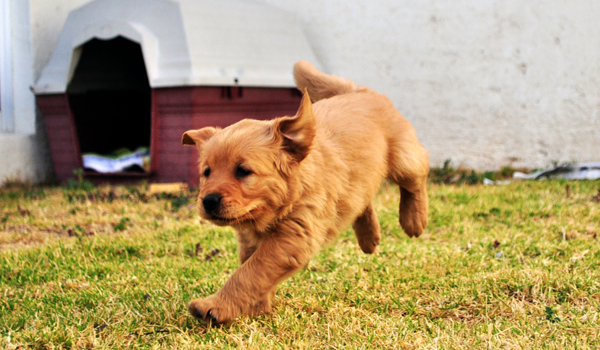When you buy through link on our situation , we may earn an affiliate committee . Here ’s how it work .
Dogs may be man ’s best supporter , but babies might also really see Fido .
A Modern field of study found that 6 - calendar month - olds can equalize the sounds of an tempestuous tangle or well-disposed yap with photos of bounder show the like torso language .

Babies as young as six months old can distinguish between friendly dog barks and threatening ones.
The results , published in the July issue of the journalDevelopmental Psychology , paint a picture that babies can decipher emotion even before they find out how to peach .
" Emotion is one of the first things babies piece up on in their social world , " said spark advance research worker Ross Flom , a psychology professor at Brigham Young University in Utah .
skin dogs

The study involved 128 infants , with 32 from each of four age groups ( 6 , 12 , 18 and 24 months ) , who had slight or no exposure to dogs . The babies first looked at two images of the samefluffy canine , one show the dog in an aggressive posture and facial expression while the other showed the dog in a friendly stance . The research worker wanted to figure out whether infants had a preference for one expression over the other before include the dog barks . They did n’t .
Then , the researchers bring a 2 - second sound cartridge holder of either a friendly or threatening dog bark while the kid viewed the two ikon . In the next test , the other sound clip ( aggressive or friendly ) was played .
The research worker videotaped the young participants as they looked at one or both of the cad image ( or glanced around the room , at a parent , or elsewhere ) . The 6 - calendar month - honest-to-goodness babies spent most of their time star at the matching photograph , so a mean bark would garner a stare at the dog-iron with the savage facial verbal expression .

" The six - month - old would look in that focal point and kept wait in that direction , " Flom toldLiveScience . " The older kids would glance at it and then kind of look away as if to say , ' Oh yeah , I get it , it go with that brass . The task is ridiculous . I ’m going to move on and look somewhere else around the room . ' "
infant smartness
The result suggest both 6 - month - olds and babies up to 2 year old could distinguish a rowdy bark from a benignant one . But the older babe just showed their correct response differently than the 6 - calendar month - olds .

retiring research in the field ofbaby smartshas rely on the proportion of time a baby looks in a certain direction or the proportionality of time he or she exhibit some other signal of response to show a babe ’s accomplishment in distinguishing facial expressions or intonations in actor’s line patterns . These subject area have evoke that while 6 - month - old are expert in verbal and facial perception even when it come to monkeys , as they get old they lose this power .
The musical theme is that babies are have a bun in the oven with a full toolbox of broad abilities . Over time , as they get the mankind , the toddlers polish their abilities and focus on what ’s really relevant , say , human face rather than monkey or frankfurter mugs .
But according to the new result , perhaps the little ones do n’t lose the power , Flom said . They just show it differently . So instead of calculating the clip spend take care in a certain direction , researchers could take into bill a babe ’s first glimpse , he total .














